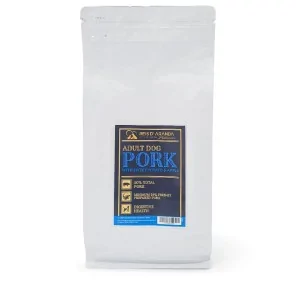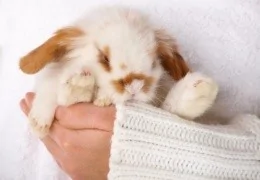The Tornjak originated from genetically homogeneous, almost extinct, indigenous shepherd dogs. These dogs have...
SHEPHERD DOG OF BOSNIA-HERZEGOVINA AND CROATIA
INTRODUCTION
The Tornjak originated from genetically homogeneous, almost extinct, indigenous herding dogs. These dogs have populated the mountain areas of Bosnia-Herzegovina and Croatia and the surrounding valleys.
THE ORIGIN OF THE SHEPHERD DOG OF BOSNIA-HERZEGOVINA AND CROATIA
It is believed that this breed of dog was brought by the Turks who occupied Bosnia and Herzegovina for almost 500 years. However, there are some indications that this breed has been present in this area even before the arrival of the Turks. The Turkish name for the breed is ‘karakach’, meaning ‘black ear’. The breed is believed to have originated from the molosser-type sheepdogs that were brought to Europe from Asia during the Roman period. The shepherd dog of Bosnia-Herzegovina and Croatia is related to the mastiff and the Rottweiler. It is also somewhat terrier-like, which is why it is so agile. The sheepdog has short legs, a large body and a small head. The ears are slightly drooping and of medium size.
THE STANDARD OF THE SHEPHERD DOG OF BOSNIA-HERZEGOVINA AND CROATIA
GENERAL APPEARANCE: The Tornjak is a large and powerful dog, well proportioned and agile. The body is almost square in shape. The bone is not light, but nevertheless not heavy or coarse. Standing and in movement he is strong, harmonious and well balanced. The coat is long and thick.
IMPORTANT PROPORTIONS: The body is almost square. The length of the body should not exceed its height by more than 8%. The ratio between the length of the skull and the muzzle is 1:1.
HEAD: Elongated. Radius between skull and muzzle is 1:1. A shorter muzzle is tolerated.
CRANIAL REGION: The upper lines of the skull and muzzle are divergent. The supra-orbital arches are slightly visible. The back of the skull is elongated but moderately broad. The area between the supra-orbital arches and the stop: Slightly pronounced.
STOP: Slightly pronounced.
FACIAL REGION:
NOSE: Large, with sufficiently broad nostrils. Should be darkly pigmented. Pigmentation should be in harmony with coat colour. Depigmentation is not permitted.
HOCIO: Rectangular. Bridge of nose perfectly straight.
LIPS: Close fitting, with dark pigmentation.
JAWS / TEETH: Jaws very long and strong. Perfect scissor bite, complete dentition.
EYES: Almond shaped, eyelids close fitting, dark in colour. Dark pigmentation on rims of eyelids.
EARS: Medium sized, triangular, folded and pendulous, set on high. Set on high, carried close to the cheeks. With shorter hair.
NECK: Of medium length, powerful, carried slightly low. Skin well attached. With abundant long hair forming a mane.
BODY
CROSS: Moderately developed.
BACK: Short, stiff, moderately broad and straight.
LOIN: The connection between the brisket and the croup is short, moderately broad; in bitches it is slightly longer.
Croup: Of medium length, broad and slightly sloping.
CHEST: Very spacious, deep, broad and oval in shape. The lowest part of the chest reaches at least to the elbows. Never barrel shaped. Chest strong with moderately pronounced point of sternum.
BOTTOM LINE: Abdomen well muscled. The underline is not tucked up but rises gradually from the end of the sternum towards the rear.
TAIL: Long, set on at medium height, very mobile. When at rest it is always hanging down and in movement it is always above the level of the topline, this is a characteristic of the breed. With abundant hair and characteristic fringe.
LIMBS: Strong and well angulated.
FOREQUARTERS: Well developed, with strong bone and tight muscles. Parallel and straight when standing.
SCAPULA: Medium length, well laid back. The scapular-humeral angle is approximately 120°.
HULMERS: Muscular and strong, almost the same length as the shoulder blades.
ELBOWS: Moderately close to the body.
FOREARMS: Strong bone and muscles developed and straight.
Pasterns: Slightly sloping.
HANDS: Fingers arched and close together. Nails pigmented, dark pigmentation desirable. Pads elastic, hard and compact, dark pigmentation desirable. The front feet are more developed than the hind feet.
HINDQUARTERS: Strong and parallel. Straight when standing with adequate angulation. Knees well angulated.
Upper thighs: Broad, strong, well muscled.
THIGH: Well muscled, strong, broad and of the same length as the thigh bone.
HINDQUARTERS: Firm. Set on a little high.
METATARS: Strong. May have dewclaws.
FEET:Toes arched and close together. Nails pigmented, dark pigmentation desirable. Pads springy, hard and compact, dark pigmentation desirable.
GAIT / MOVEMENT: The Tornjak is a trotter. The movement is well balanced, elastic and powerful, harmonious and with great drive. In movement the topline is firm.
SKIN: The skin is thick, well attached all over the body.
COAT
HAIR: In general, the Tornjak is a dog with long, thick, coarse, harsh and straight coat. It is especially long on the upper part of the croup; over the shoulders and back it may be slightly wavy. It is short on the muzzle and face, above the imaginary line connecting the ears, over the ears and on the front of the legs and feet.
It is especially abundant around the neck (mane), dense and long on the thighs. It forms fringes on the forearms. In dogs with a good coat it is also especially abundant on the back of the metatarsals. The tail is very thick with very long hair. The winter undercoat is long, very thick and of a nice woolly texture. The coat is thick and dense and should not split in two along the topline.
COLOUR: As a rule the Tornjak is split coloured with characteristic markings in various solid colours. Generally the dominant ground colour is white. There may be dogs with black coat and with white markings which usually occur around the neck, on the head and along the legs. There may also be dogs almost entirely white with only small markings.
SIZE:
HEIGHT AT WITHERS
- MALES: 65 - 70 cm
- FEMALES: 60 - 65 cm
FAULTS: Any departure from the foregoing points should be considered a fault and the seriousness with which the fault should be regarded should be in exact proportion to its degree and its effect upon the health and welfare of the dog.
- Bone too fine or too heavy.
- Head too fine or too coarse.
- Faults in the ears (set on, length, hair).
- Pincer bite.
- Absence of 2 p2, 2 p3. Absence of more than 2 p1.
- Very long back.
- Slanted or saddled topline.
- Dog obviously exaggerated.
- Angulations with faults.
- Elbows turned in or out.
- Tail carried over the back.
- Tail with too little hair.
- Insufficient length of coat.
- Dark mask.
- Weak feet.
DISQUALIFYING FAULTS:
- Aggressiveness or extreme shyness.
- Any dog showing clear signs of physical or behavioural abnormalities.
- Lack of type (atypical dogs).
- Deviation from sexual type.
- Abnormalities in the colour and shape of the eyes (wiry eyes, vicious expression, eyes of different colour).
- Entropion, ectropion.
- Prognathism or enognathism.
- Absence of any teeth other than those mentioned as missing.
- Too short coat.
- Lack of undercoat.
- Broken tail.
- Absence of tail.
- Solid coloured dogs.
- Albinism.
- Atypical distribution of colours on the body.
- Differences in the limits of the indicated heights (including tolerance).
- Cosmetic treatment of the dog or evidence of cosmetic or surgical treatment.
N.B.:
Male dogs should have two apparently normal appearing testicles fully descended into the scrotum.
Only functionally and clinically healthy dogs, with breed typical conformation, should be used for breeding.
HEALTH OF THE SHEPHERD DOG OF BOSNIA-HERZEGOVINA AND CROATIA
This breed is prone to develop hip dysplasia, elbow dysplasia and eye disease. As with all breeds, it is important to regularly check your dog for any health problems. You should also be sure to feed your dog a healthy diet specially formulated for his breed's needs.
THE PERSONALITY OF THE BOSNIAN-HERZEGOVINIAN AND CROATIAN SHEPHERD DOG
This is, as already mentioned, an extremely strong and powerful dog. It is an excellent choice for shepherds who need to protect their flocks from predators such as wolves. The Shepherd of Bosnia-Herzegovina and Croatia is an alert watchdog and an effective guard dog that barks and makes a lot of noise when a stranger approaches the house. It is an obedient and loyal breed that respects its owner and is willing to protect him and his family at any cost. The Bosnia-Herzegovina and Croatian Shepherd is an ideal family dog provided he is given enough time and properly trained.
CONCLUSION
The Sheepdog breed of Bosnia-Herzegovina and Croatia is an extremely strong, powerful and well-built dog breed that has an excellent sense of smell and hearing. The breed is an ideal guard dog for livestock and is also extremely agile, making it a great choice for shepherds who need a working dog to protect their flocks from predators such as wolves.
Leave a comment
Log in to post comments
















